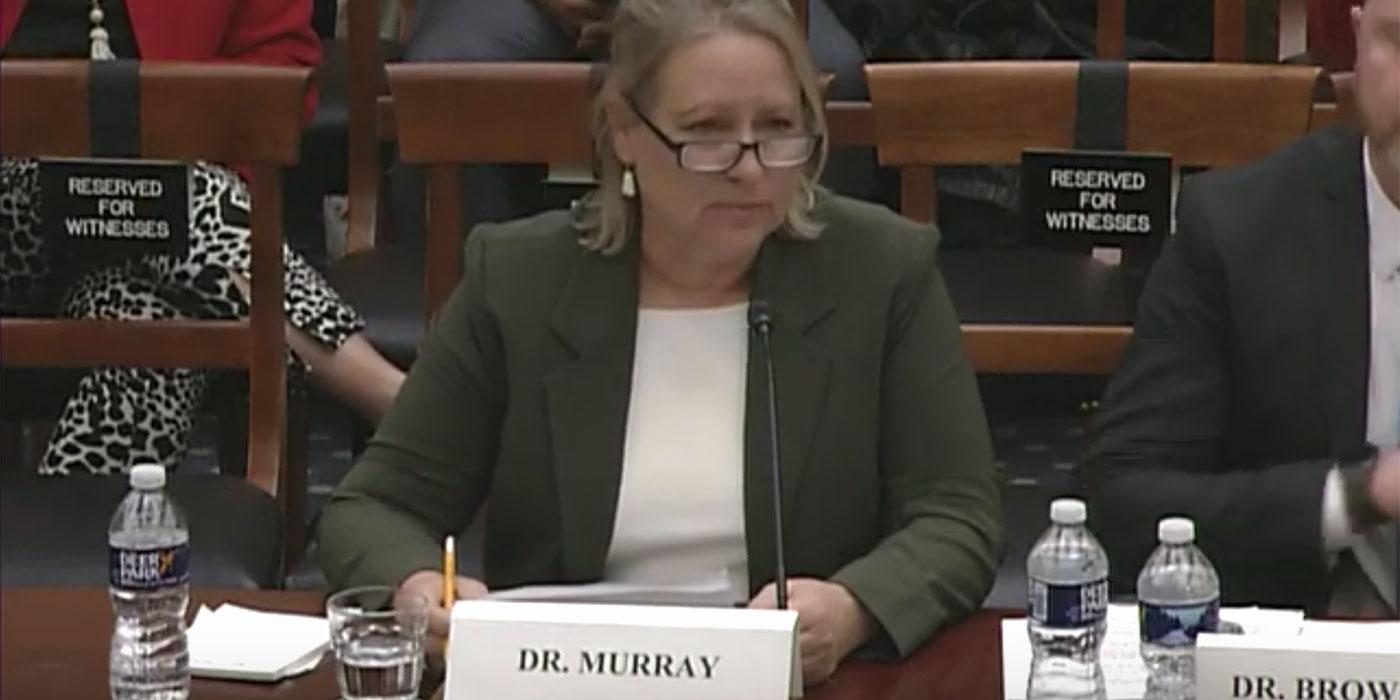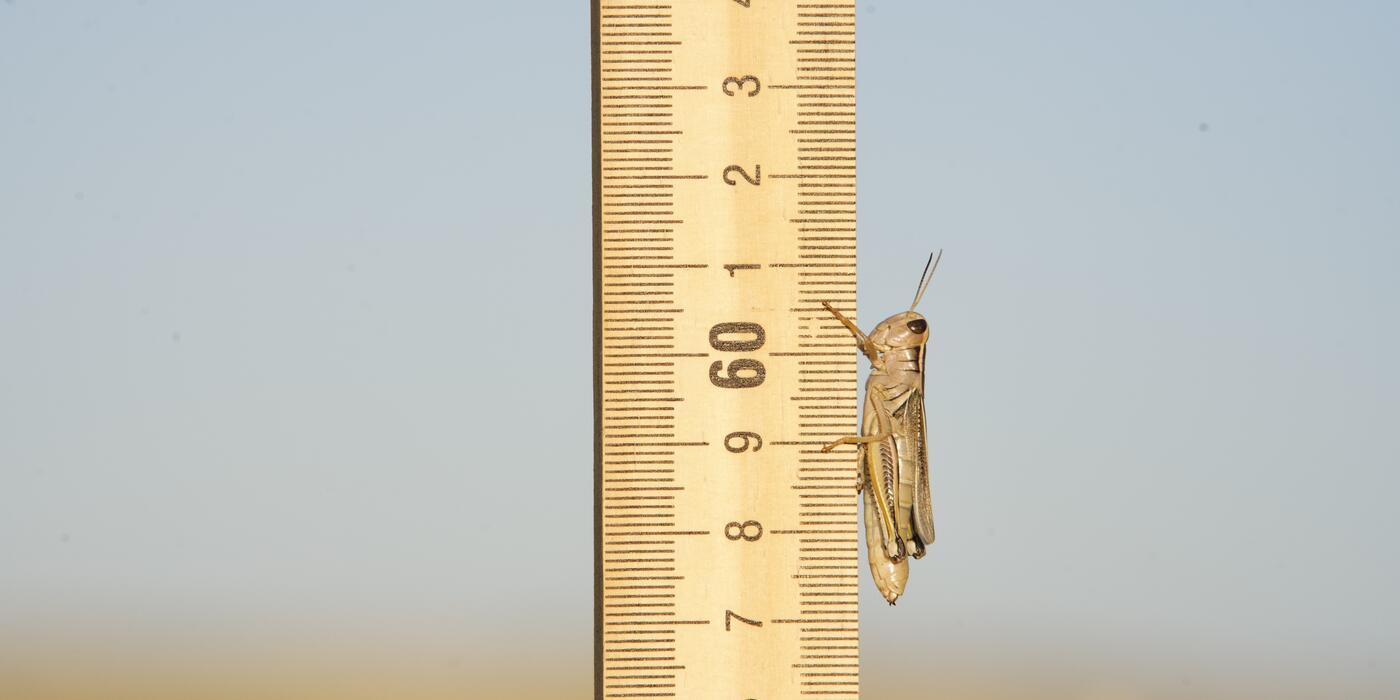Head of SCBI's Global Health Program Testifies on Zoonotic Disease

Dr. Suzan Murray, head of the Smithsonian Conservation Biology Institute’s Global Health Program testified on zoonotic disease transmission before the House Science, Space, and Technology Committee on March 5, 2020. A transcript appears below.
Chairwoman Johnson, Ranking Member Lucas, and Members of the Committee, thank you for calling this hearing, and inviting me to participate. My name is Suzan Murray, and I am the Director of Smithsonian’s Global Health Program, based out of the National Zoological Park and Conservation Biology Institute. This program utilizes experts in wildlife medicine, human medicine, public health, conservation biology, epidemiology, virology and molecular biology to study and respond to issues emerging at the human/animal interface. We utilize a multidisciplinary approach to investigate emerging infection diseases that threaten both human and animal life, and we build in country capacity and train the next generation of health specialists.
Human health, wildlife health, and environmental health are often described as inextricably linked and closely dependent upon one another. In order to safeguard the survival of all species, it is critical that we examine health across a continuum of species and have research and decisions firmly rooted in scientific knowledge. Understanding the current viral threats, the patterns and drivers of disease emergence, and the human behaviors that contribute to such emergence will best allow us to not only respond to this outbreak, but the next one and the one following that because we know this is coming. Already we have identified many of the drivers of disease emergence and spread, including land use change, increased human/wildlife interaction, and globalization of travel and markets.
Time and history have repeatedly shown us it is much more humane, efficient, and economical to prevent disease, rather than identify, respond to, diagnose, treat, and attempt to contain an outbreak. Through increased understanding of the as-of-yet undiscovered viruses, the drivers of emergence, and the risk factors associated with various behaviors we can develop early warning systems, prepare rapid response teams, and provide critical data and information to the vaccine industry to better prepare for the next outbreak.
Just as critical, we must educate local medical professionals and the people living in communities with the greatest risk of outbreaks. By preventing the spread of pathogens at the source, we can avoid the global consequences we are seeing now.For example, over the last 10 years, working with partner agencies, we have identified more than 1,200 novel wildlife-borne viruses, 161 of which belong to the same family as the COVID-19 virus. In that time, we strengthened the capability for virus detection and characterization in 60 labs in regions where pandemics are most likely to originate, and trained over 6,600 people in more than 30 countries to be our front line of defense against emerging diseases. At this moment, the world is focused on the novel coronavirus, COVID-19. While it’s essential that we do everything we can to respond to the emerging global crisis, now is also a time when we should be thinking about future emerging viruses. Research published in the Proceedings of the National Academy of Sciences has found that spillover of new viral infections from animals to humans is occurring with increased frequency, a direct result of the increased interaction people now have with wildlife and their products. The next global pandemic is not a matter of if, but when and where. To quickly identify and contain such infections, health and disease must be evaluated across species on a global scale.
While he might not have imagined it in this context, Ben Franklin was right when he said “An ounce of prevention is worth a pound of cure.” When it comes to outbreaks, the costs of responding to a crisis can dwarf the up-front investment in research and education. Beyond the clear moral obligation to protect human life, there are staggering financial benefits from focusing on preventative measures. For example, the human and economic toll from the West African Ebola epidemic was massive—more than 11,000 people lost their lives and over $3.6 billion dollars was spent globally, with nearly $2.4 billion spent by the U.S., in response. A global economy compounds the economic impacts of disease through travel, trade, and financial networks. In the case of the SARS epidemic of 2004, the estimated global financial impact was between $30 and $50 billion, Ebola was $10 billion, and the current COVID-19 impact, while still an evolving and dynamic situation, is expected to be even higher. It is obvious through market reaction by now that this outbreak has already created an international financial impact.
Advancements in the detection of novel pathogens show the most efficient way to identify, respond to, and contain an outbreak is through coordinated wildlife and human surveillance. We estimate there are 1.7 million unknown viruses, around half of which could infect people, and some lead to new pandemics. As of now, there are no coordinated programs to work in high risk regions to identify these unknown viruses, get their genetic sequences into our labs, and identify ways to reduce risk of them emerging. Our best defense against spreading diseases that make their way into human populations is through research and education. While we cannot stop every disease outbreak, we can reduce their frequency and build the capacity for a rapid global response when they occur.
Thank you once again for having this hearing and for your interest in this pressing and important topic. I look forward to answering any questions you may have.

